If you’re connecting Stripe to QuickBooks Online, Acodei is likely a familiar name. It automates basic Stripe data syncs, importing sales, fees, and refunds into your books to reduce manual work.
But as ecommerce businesses scale and add more payment processors, marketplaces, or accounting needs, they often hit the ceiling of what Acodei can do. Users begin asking for multi-channel integrations, deeper reconciliation tools, or broader support across systems like Xero and QuickBooks Desktop.
That’s where Acodei alternatives come in. Let’s explore why businesses switch, which tools stand out in 2025, and how to choose the one that fits your particular needs.
Why businesses look for Acodei alternatives
Across review sites and accounting forums, the most common reasons for switching include:
1. Limited integration scope
Acodei connects only Stripe and QuickBooks Online. Once businesses add Shopify, PayPal, Amazon, or Square, they have to manage multiple connectors or migrate altogether.
2. Reconciliation challenges
Users occasionally face mismatched Stripe deposits or duplicated transactions due to limited control over how data posts (summary vs. per-transaction). Clean month-end reconciliation becomes harder as transaction volume grows.
3. Expanding accounting complexity
Teams handling multi-currency operations, detailed COGS tracking, or deferred revenue recognition need a more powerful automation engine than Acodei provides.
4. Lack of customization
Acodei automates the basics but doesn’t let you build granular rules for data mapping, renaming, or filtering – something accountants often need for compliance and reporting accuracy.
5. Support & platform flexibility
While Acodei earns praise for its friendly team, larger companies need 24/7 support, advanced documentation, and the ability to integrate multiple accounting platforms.
1. Synder – the #1 Acodei alternative for scalable accounting automation
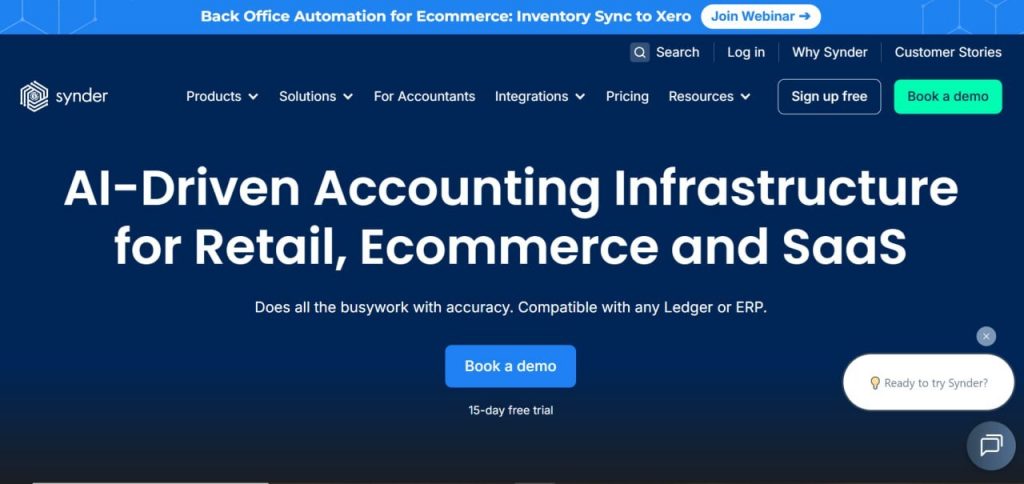
Synder is more than an integration. It’s an accounting automation platform built for ecommerce and SaaS businesses managing multiple payment systems. It unifies data from 30+ ecommerce and payment platforms, including Stripe, Shopify, Amazon, PayPal, Square, Clover, TikTok Shop, and WooCommerce, and syncs it into accounting and ERP systems, like QuickBooks, Xero, Sage Intacct, or NetSuite.
Unlike narrow connectors, Synder gives accountants full visibility and control over every posting rule, ensuring accurate, audit-ready financials at scale.
Suitable for
Growing ecommerce and SaaS businesses that need multi-channel automation, accurate reconciliation, and GAAP-compliant reporting across several payment processors and accounting systems.
Key features
- Multi-channel data sync: Automatically imports all sales, refunds, taxes, and fees from 30+ platforms, standardizing them in your accounting software.
- Reconciliation-friendly entries: Each payout lands perfectly balanced, with clearing accounts automatically managed, leaving you with no more mismatched deposits or missing Stripe fees.
- Smart Rules & automation logic: Create if-then rules to categorize transactions, assign classes, rename customers, or handle metadata automatically.
- Dual sync modes: Choose Per Transaction Sync for precision or Summary Sync for high-volume efficiency.
- GAAP & ASC 606 compliance: Automate deferred revenue schedules for subscription or installment-based revenue.
- Advanced reporting: Get real-time Profit & Loss statements and Balance Sheets with filters by channel, location, or tax category.
Synder vs. Acodei: Detailed comparison
| Capability | Synder | Acodei |
| Supported accounting and ERP platforms | QuickBooks, Xero, Sage Intacct, NetSuite | QuickBooks Online only |
| Supported sales/payment channels | 30+ (Stripe, Shopify, Amazon, PayPal, Square, etc.) | Stripe only |
| Posting flexibility | Summary or Per Transaction Sync | Per Transaction |
| Fee/refund handling | Fully automated with clearing accounts | Basic fee sync |
| Reconciliation support | Automatic payout matching and clearing balance tracking | Manual verification often required |
| Customization & rules | Advanced Smart Rules for mapping and tagging | Basic defaults |
| GAAP / ASC 606 support | Yes – deferred revenue schedules for SaaS | No |
| Scalability | Handles high volumes and multi-channel data | Stripe-only use cases |
| Customer support | 24/7 live chat + onboarding specialists | Email support only |
Considerations
Synder’s depth means setup takes more time than lightweight tools like PayTraQer or Sush.io. Its plans are priced for growing businesses, not micro-sellers handling just a few transactions.
Pricing
Verdict
Synder is the clear #1 alternative to Acodei. It handles everything Acodei does and far more, with complete accuracy across multiple channels, currencies, and ledgers. For companies scaling beyond a single Stripe account, Synder delivers the power, flexibility, and confidence that basic connectors can’t match.
If your goal is to close your books faster, keep reconciliations clean, and future-proof your accounting stack, Synder is the upgrade you’ve been looking for.
Explore everything firsthand with a 15-day free trial, or get a personalized 1:1 demo to see how Synder can adapt to your workflow.
2. PayTraQer – for QuickBooks users seeking simplicity
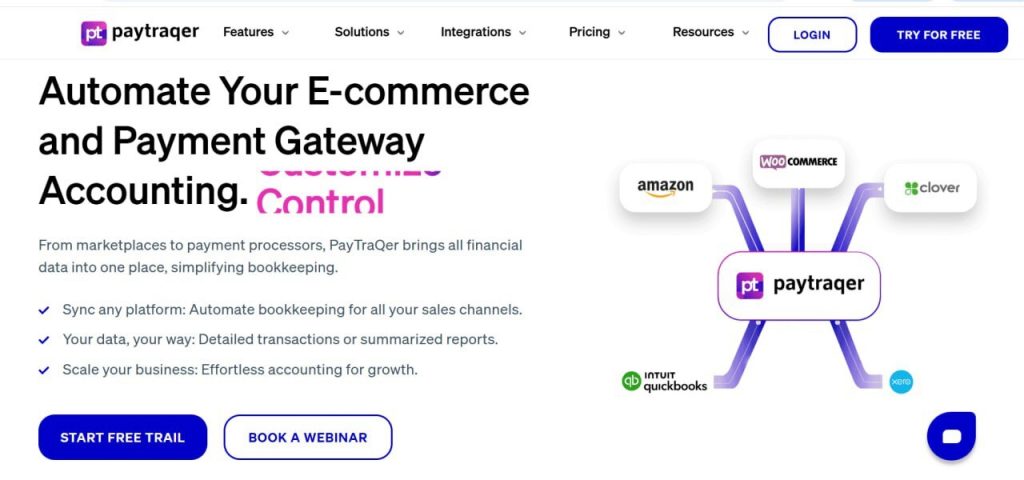
PayTraQer offers automated sync of sales, refunds, and fees from popular ecommerce and payment platforms like Stripe, Shopify, Amazon, PayPal, eBay, Etsy, and Square directly into QuickBooks Online or Xero. It’s built for teams that want to save time on manual bookkeeping and keep their accounts clean without adding unnecessary complexity.
Suitable for
Startups and small businesses that process payments through a few channels and want quick automation on a tight budget.
Key features
- Easy setup and integration with QuickBooks Online
- Automatically syncs sales, refunds, and fees as invoices or deposits
- Budget-friendly pricing tiers
- Support of multiple payment platforms out of the box
Considerations
Lacks QuickBooks Desktop or Xero integration and offers limited control over posting methods or detailed reconciliation workflows.
Pricing
| Plan | Price (billed annually) | Details |
| Rise | $190 / year | Supports up to 500 transactions, 1 user, 2 sync rules, 12 months of history, and chat/email support. |
| Scale | $290 / year | Up to 1,000 transactions, 5 users, 5 sync rules, unlimited historical sync, and chat/call support. |
| Large | $490 / year | Up to 5,000 transactions, 10 users, 10 sync rules, unlimited history, and dedicated onboarding. |
| Dynamic | $990 / year | Up to 10,000 transactions, 10 users, 20 sync rules, unlimited history, and priority onboarding. |
| Flexi (Custom) | Contact sales | Custom limits, users, and automation rules with full onboarding and dedicated support. |
Verdict
PayTraQer is a strong Acodei alternative for small businesses that value simplicity and affordability. It gets core automation right, but may not scale well for accountants or multi-channel sellers.
3. Sush.io – for Stripe-only workflows
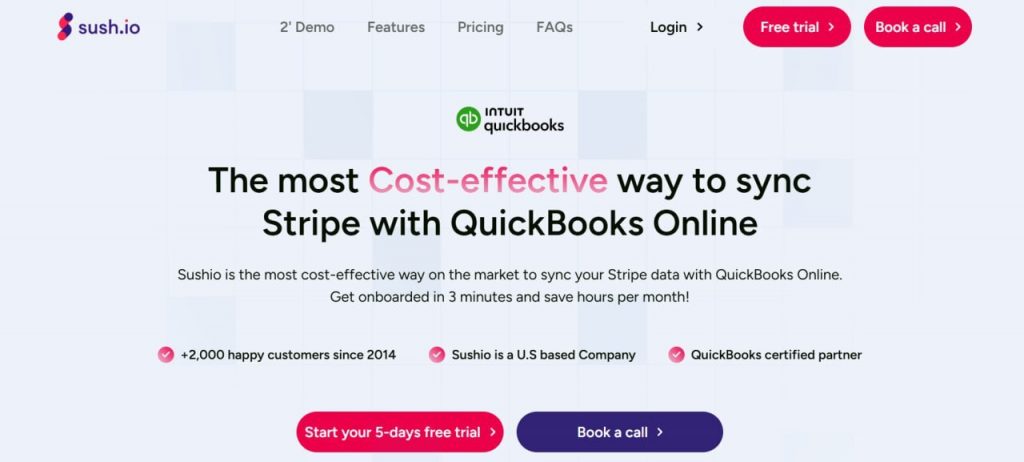
Sush.io automates your Stripe → QuickBooks Online flow, syncing sales, fees, refunds, disputes, taxes, and payouts to make bookkeeping smoother. All historical data can be imported, and reconciliation is simplified with matched Stripe fees.
Suitable for
Freelancers or micro-businesses relying solely on Stripe who want to remove manual bookkeeping without a lot of setup overhead.
Key features
- Automatic Stripe transaction import
- Simple setup and low learning curve
- Basic fee and refund handling for accurate gross/net reporting
Considertaions
Supports only Stripe and QuickBooks Online; lacks multi-channel and reconciliation-level controls. Some users report sync delays after Stripe API updates.
Pricing
Verdict
Sush.io suits small teams running exclusively on Stripe. However, for businesses with growing transaction volume or multiple channels, tools like Synder or PayTraQer offer longer-term flexibility.
4. Zoho Books – all-in-one accounting alternative
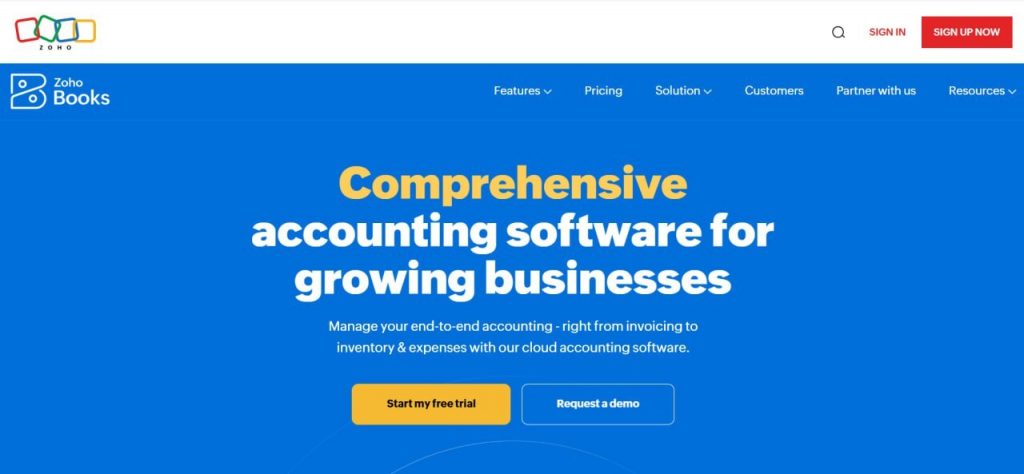
Zoho Books isn’t just a connector, but a full accounting platform. Many Acodei users who outgrow QuickBooks migrate entirely to Zoho’s ecosystem, which includes CRM, billing, inventory, and analytics modules.
Suitable for
SMBs wanting an all-in-one accounting system with built-in payment integrations and automation.
Key features
- Integrated suite with CRM, invoicing, and inventory.
- Supports Stripe, PayPal, and other gateways natively.
- Offers automation for recurring invoices and expense tracking.
- Includes a free tier for micro-businesses.
Considerations
Switching from QuickBooks requires data migration and a new workflow. App ecosystem is smaller than QuickBooks’ or Xero’s.
Pricing
| Plan | Price (per org/month, billed annually) | Details |
| Free | $0 | 1 user + 1 accountant; invoicing, expenses, bank reconciliation, W-9 & 1099 management, 50+ reports, email support. |
| Standard | $15 | 3 users; progress invoicing, retention payments, recurring expenses, reporting tags, tax handling, API access, multi-currency. |
| Professional | $40 | 5 users; vendor bills and payments, inventory management, project profitability, multi-currency, custom user roles. |
| Premium | $60 | 10 users; fixed asset management, budgets, vendor portal, custom modules, validation rules, custom domain. |
| Elite | $120 | 10 users; advanced inventory with warehouse management and batch tracking, multi-location support, shipping integrations. |
| Ultimate | $240 | 15 users; advanced analytics, KPI dashboards, business intelligence, and all features from lower tiers. |
Verdict
Zoho Books is ideal if you’re ready to move away from QuickBooks entirely and want unified financial management in one platform.
5. Xero – cloud-based accounting alternative

Xero is a powerful, cloud-first accounting solution often chosen by accountants and international businesses. It includes built-in bank reconciliation, reporting, and a vast marketplace of connected apps.
Suitable for
Businesses looking for a complete accounting platform with native integrations and modern collaboration features.
Key features
- 1,000+ app integrations, including Stripe and Shopify.
- Real-time bank reconciliation and cash-flow dashboards.
- Excellent collaboration tools for distributed teams.
- Strong global and multi-currency support.
Considerations
Requires migration from QuickBooks and may have a steeper learning curve for new users.
Pricing
| Plan | Price (per month) | Details |
| Early | $20 | Send quotes and up to 20 invoices, enter 5 bills, reconcile bank transactions, manage 1099 contractors, and access basic reports. |
| Growing | $47 | Includes all Early features plus unlimited invoices and bills, bulk reconciliation, and simple automation for daily bookkeeping tasks. |
| Established | $80 | Adds multi-currency accounting, expense claims, project tracking, and advanced analytics for scaling or international businesses. |
Verdict
Xero is the right move if you’re replacing, not supplementing, your accounting software and want built-in automation for payments and reconciliation.
6. Wave – an accounting solution for freelancers
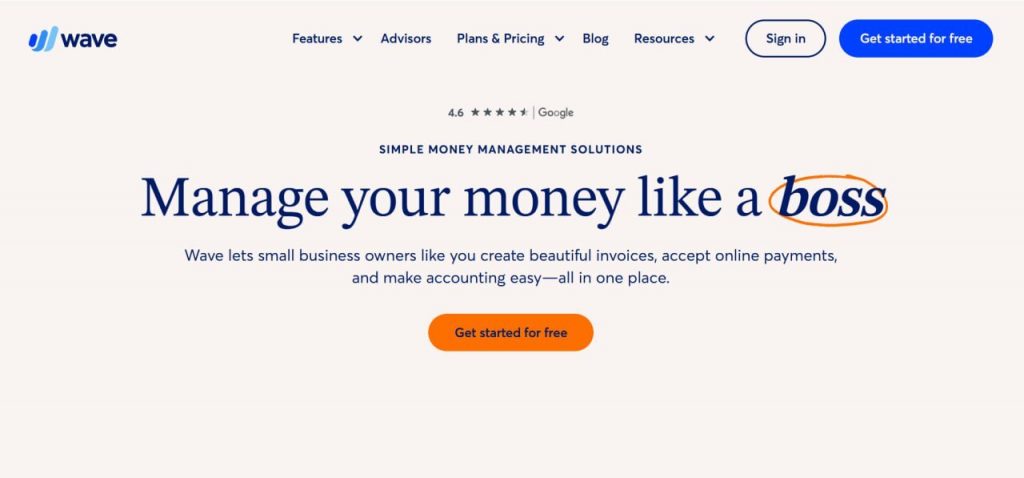
Wave provides cloud-based accounting for freelancers and very small businesses. It supports core bookkeeping, invoicing, and basic Stripe payment tracking.
Suitable for
Freelancers or single-founder startups that prioritize cost savings and simplicity over advanced automation.
Key features
- Free bookkeeping and invoicing tools.
- Basic Stripe and bank connection options.
- Simple cash-flow tracking dashboard.
Considerations
No deep reconciliation features, no Xero/QuickBooks integration, and limited scalability.
Pricing
Verdict
Wave is perfect for solo entrepreneurs needing lightweight accounting software—but not suitable for ecommerce sellers managing multiple platforms.
Choosing the right Acodei alternative
When evaluating replacements, consider:
- Your business scope:
Stripe-only or multi-channel? If multi-channel is even on the horizon, Synder is the future-proof option. - Your accounting platform:
If you plan to move from QuickBooks Online to another accounting platform, choose a tool that already supports them. For example, Synder also boasts integration with Xero, Sage Intacct, and NetSuite. - Your transaction volume:
High volumes benefit from summary posting and advanced reconciliation logic, like in Synder. - Your need for control:
Accountants and controllers often prefer configurable automation rather than fixed templates. Synder, for instance, offers that flexibility.
Final thoughts
Acodei is a capable tool for small, Stripe-only businesses. But as soon as your operations involve multiple sales channels, currencies, or accounting systems, you’ll want something more robust.
Overall, Synder stands as the best Acodei alternative, combining deep integration coverage, advanced reconciliation tools, and enterprise-grade accuracy. It’s the kind of upgrade that doesn’t just automate your books, but also future-proofs them.
FAQ
What are the main limitations of Acodei that push people to seek alternatives?
Users often cite its focus on only Stripe → QuickBooks Online, limited customization of posting rules, reconciliation mismatches (especially with fees/payouts), and lack of multi-channel or multi-ledger support as reasons to explore alternatives.
Can I switch from Acodei to another integration without losing historical data?
Yes, most connectors and accounting platforms (e.g. Synder) support importing historical transactions. But you’ll want to plan a transition carefully: back up your books, test in a sandbox, and map posting rules to ensure continuity.
Which accounting software does Synder support beyond QuickBooks Online?
Synder supports Xero, Sage Intacct, and NetSuite in addition to QuickBooks Online, giving you flexibility if your financial system evolves or if you run multiple ledgers.
Will these alternatives handle multiple payment platforms like Amazon, PayPal, Shopify, etc.?
Yes, many of the top alternatives are designed for multi-channel use. For instance, Synder supports syncing from multiple payment and ecommerce platforms, TikTok, eBay, Amazon, Shopify, Stripe, PayPal, and more, consolidating all sources into your accounting system.
How do these tools impact reconciliation and accounting accuracy?
Tools like Synder provide reconciliation-friendly posting: they use clearing accounts, match payouts automatically, separate out fees/refunds, and allow summary vs. transaction-level sync modes. This reduces manual cleanup and improves accuracy at month-end.






